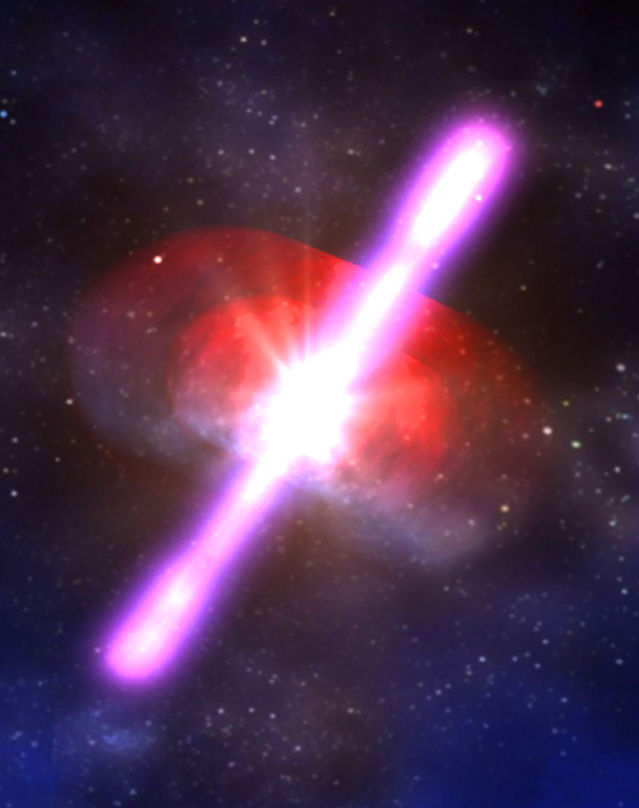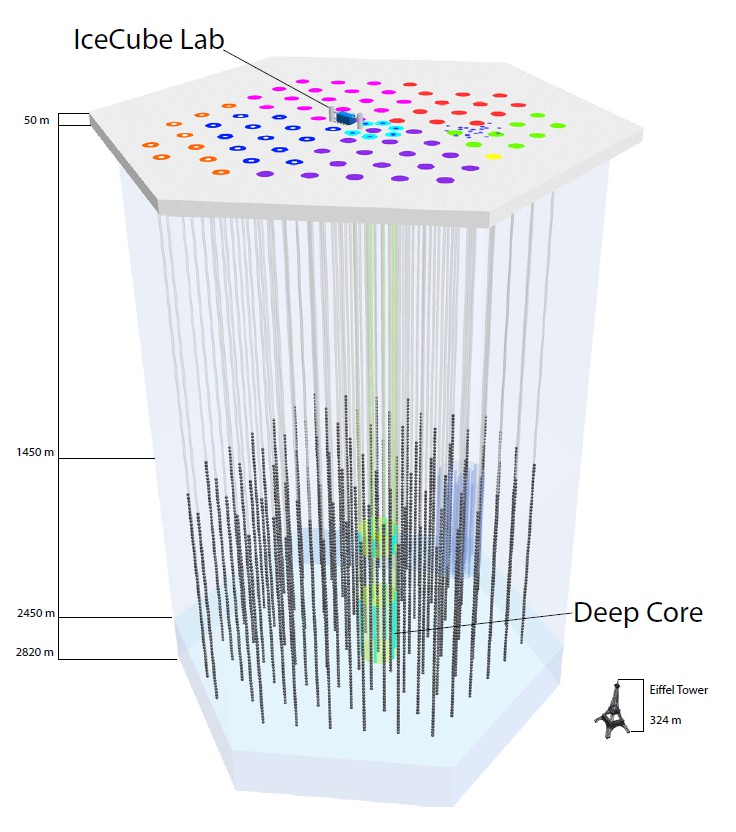Buried more than 2 kilometers deep in the ice under the South Pole, the IceCube neutrino detector seems like an unlikely place to find a window to the universe. But with the help of some Kiwi scientists, the IceCube and the tiny “ghostly” particles it detects are revealing the sources of high energy cosmic rays which bombard the earth from interstellar space.

The first high-profile results from the IceCube project, an international collaboration which includes New Zealand scientists, are published in the journal Nature today.
The IceCube array detects high-energy sub-atomic particles called neutrinos, which are believed to accompany cosmic rays made of electrically charged particles which strike the earth from all directions.
One theoretical source of these cosmic rays is gamma-ray bursts – exploding fireballs in deep space. However, the new research from IceCube has found that there was no link between observed gamma-ray bursts and the energy of neutrinos detected – a result that contradicts 15 years of predictions and challenges one of the two leading theories for the origin of the highest energy cosmic rays (the other possible source being super-massive black holes).
“Although we have not discovered where cosmic rays come from, we have taken a major step towards ruling out one of the leading predictions,” said IceCube principal investigator and University of Wisconsin – Madison physics professor Francis Halzen.
Photos and animations are available in the IceCube media gallery.
The Science Media Centre contacted Associate Professor Jenni Adams, University of Canterbury, one of several New Zealand scientists involved in the IceCube project, for further comment:
 What is the purpose of the IceCube array?
What is the purpose of the IceCube array?
“The IceCube array has been constructed to investigate a range of fundamental physics topics. Its main purpose is to detect high-energy neutrinos. Detecting high-energy neutrinos should reveal the sources of the highest energy cosmic rays. This is because neutrinos will be produced in the same regions where cosmic rays are accelerated. As the cosmic rays are charged their paths are affected by cosmic magnetic fields which means their incoming direction into the earth’s atmosphere cannot be used to trace back to their source. However neutrinos are neutral and so not affected by magnetic fields which means their incoming direction will point back to their origin and the source of the cosmic rays.”
How have you been involved in the IceCube Project?
“Through a Marsden research grant over the last five years, our group at the University of Canterbury have worked on a number of IceCube projects. These included modelling how the light through which the neutrinos are dected, propogates in the ice. One of our PhD students Stephanie Hickford went to the South Pole to help calibrate the detector before it took the data used in the research described in this paper. We have also undertaken our own analyses looking for a diffuse background of neutrinos.”
Why is the array so large?
“All neutrino detectors need to be big because neutrinos interact very weakly. Their ghostly nature means they can easily travel through people, walls, or the planet Earth. To compensate for the antisocial nature of neutrinos and detect their rare interactions, all neutrino detectors need to be large. Neutrino detectors have been built with large tanks of water underground. These instruments can detect the neutrinos produced in the sun and neutrinos produced when cosmic rays interact in the earth’s atmosphere. IceCube needs to be much larger than these instruments as it aims to detect astophysical neutrinos which are much rarer than solar or atmospheric neutrinos. ”
“So in one sentence: IceCube is huge because it aims to detect rare particles which only interact rarely!”
What are the other possible sources for the high energy cosmic rays?
“Other possible sources are Active Galactic Nuclei. These are supermassive black holes at the centre of galaxies. Observations over many different wavelengths of light, from gamma-ray to radio, show us that these objects have powerful jets where electrons are accelerated. It is possible that protons are accelerated here although we have do not have direct evidence.
“I would say that Active Galactic Nuclei are the prime candidates now given that gamma-ray bursts don’t seem to be able to do the job, or the whole job, at least.”
Professor Matt Visser, School of Mathematics and Computer Science, Victoria University, also commented:
“Gamma Ray Bursts (GRBs) are extremely high-energy phenomena talking place at extremely large cosmological distances, basically “the flash seen half-way round the universe”. Every reasonable model we have of how these GRBs are generated predicts that they should also generate a “neutrino flash”, not just light (gamma rays). What the IceCube neutrino detector has done is to look for these neutrinos, and it has seen that GRBs produce far fewer neutrinos than expected. The experiment works by wiring up a cubic kilometer of clean Antarctic glacier ice with scintillator tubes, (photomultiplier tubes), and then looking for the visible light that is generated by a small faction of the neutrinos in the neutrino flash hitting the atoms in the ice.
“This is a very delicate precision experiment that needs vast amounts of clean and stable ice to even build the detector, and an international team of physicists to keep it up and running.
“The significance of the non-observation of the expected neutrino flux is that it forces us to re-asess our models of how GRBs are generated. This will impact on our understanding of certain types supernovae and of the late stages of stellar evolution, and possibly have wider implications in cosmology.”